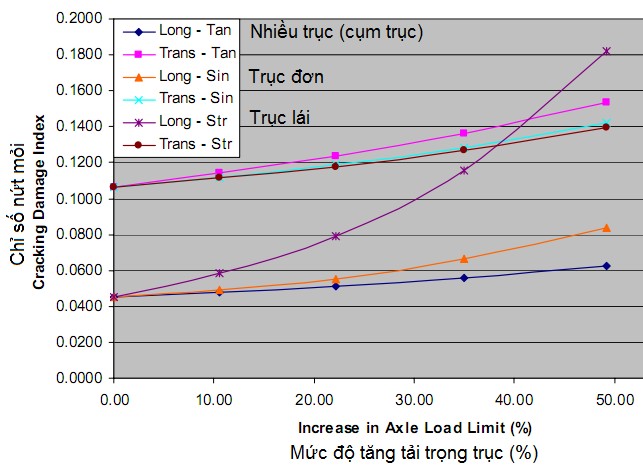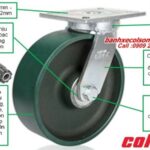Axle load is a critical factor in both road design and operation. Accurately converting axle load to vehicle load is essential to ensure the longevity of road infrastructure and traffic safety. This article analyzes axle load regulations, the impact of load on pavement structures, and proposes solutions for vehicle load management in Vietnam.
 Diagram illustrating axle load distribution on a vehicle
Diagram illustrating axle load distribution on a vehicle
Road Pavement Design Calculation Methods and Load Conversion
Currently, Vietnam applies two standards for flexible pavement design calculations: 22TCN 211-06 and 22TCN 274-01. Both standards stipulate the standard design axle load and methods for converting actual axle loads to design axle loads.
22TCN 211-06 uses a standard single dual-wheel axle load of 100kN (or 120kN). Actual traffic loads are converted to standard axle loads using a formula with a conversion factor dependent on the power of the axle load (n=4.4).
22TCN 274-01 uses a standard single dual-wheel axle load of 80kN. The equivalent load conversion equation depends on several factors, including the Structural Number (SN) of the pavement, and follows a power function rule with an approximate exponent of 4.
In addition, other standards exist, such as the Soviet Union’s Flexible Pavement Design Procedure (1972), BCH 46-83, ОДР218.046-01, ТКП 45-3.03-112-2008, and NF P 98-086. Each standard has different regulations regarding standard design axle loads and load conversion methods.
Impact of Load During Road Operation
Axle load, tire pressure, contact area, and wheel arrangement all affect pavement damage, deformation, and lifespan. Experimental studies have demonstrated that the greater the axle load, the more severe the pavement damage.
Figure 2: Correlation between axle load and road rutting depth
Experimental Research Results
Numerous studies worldwide have highlighted the relationship between axle load and pavement damage such as cracking and rutting. Some studies show that the overall resilient deflection of the pavement structure increases exponentially with respect to axle load, with an exponent of 3.8.
Experiments by the Institute of Transport Science and Technology
The Institute of Transport Science and Technology conducted field experiments to determine tire pressure and contact area of trucks when tire pressure and axle load change. The results showed that tire pressure on the pavement increases proportionally to the vehicle axle load.
 Experimental setup for measuring tire pressure and contact area of truck tires
Experimental setup for measuring tire pressure and contact area of truck tires
Conclusion
Axle load is a critical factor affecting pavement lifespan. The conversion of axle load to vehicle load needs to be accurately performed according to design standards. It is necessary to control vehicle loads on roads, especially overloaded vehicles, to ensure infrastructure longevity and traffic safety.
Recommendations
Further research is needed on axle load conversion in design calculations and the extent of pavement damage caused by various types of trucks. Stricter regulations are needed for load control and technical specifications of vehicles allowed to operate on roads.
